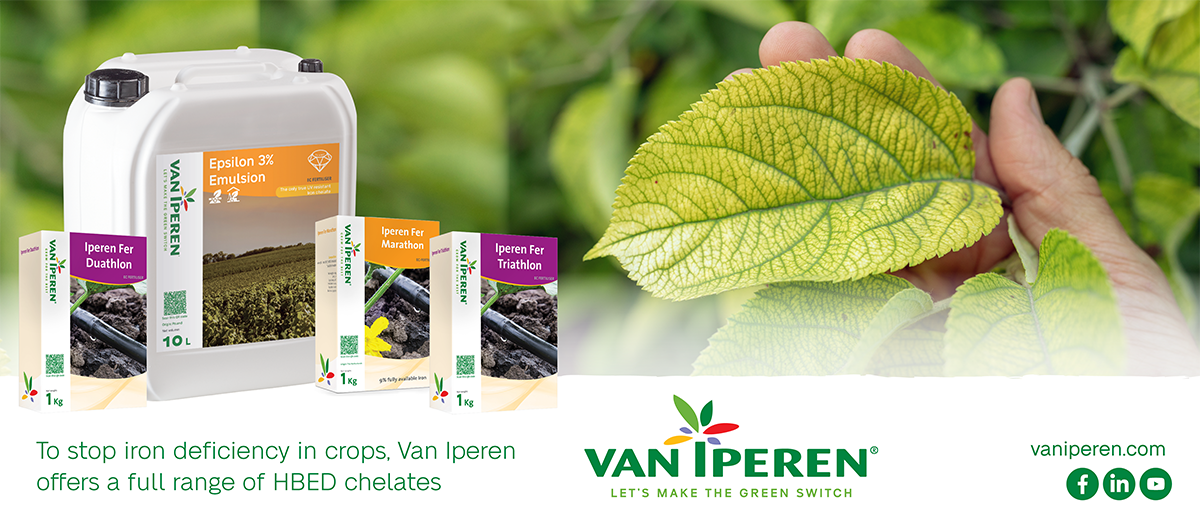Iron (Fe) is very important for the growth and health of the plant. It plays an essential role in metabolic processes such as DNA synthesis, energy transfer, respiration, and photosynthesis.

In concrete, iron helps carry important elements through a plant’s circulatory system. Without iron, a plant can’t produce chlorophyll and, therefore, can’t get oxygen. In consequence, the leaves won’t be green. One of the symptoms of iron deficiency -or iron chlorosis- in plants is the development of yellow leaves with dark green veins.
Many different factors can impact the amount of iron and its availability in soil. For instance, we know that high pH, bicarbonates content, and low soil temperatures reduce iron availability. Water excess (particularly in acidic soils) and compacted or poorly aerated soils can also decrease iron availability. On the other hand, the surplus of certain elements (zinc, nickel, molybdenum, phosphorus) can reduce the iron uptake of the plant.
To stop iron deficiency in crops, Van Iperen offers a full range of HBED chelates as part of our Micronutrients solutions:
- Iperen Fer Duathlon is a highly pure, 85% HBED and 15% DTPA chelated Iron fertilizer, recommended in initial growth stages when used in soil, and through the whole cycle for soilless crops.
- Iperen Fer Marathon is another 100% HBED chelated Iron fertilizer, developed for fertigation in the open field and for soil injection, that improves the production of chlorophyll.
- Iperen Fer Triathlon is a 50% HBED, 40% EDDHA, and 10% DTPA chelated Iron fertilizer that combines these three high-quality chelating agents to give full protection to iron in all soil conditions.
What HBED chelates are?
Van Iperen offers the strongest chelates on the market. HBED is one chelating agent aiming at iron deficiency problems in high pH soils. Due to its exceptional stability constant, HBED chelates protect the iron from precipitation at a pH up to 12.
If you wonder how to choose the proper iron chelate, read our guidelines to pick the right solution for your crop: How to choose an iron chelate